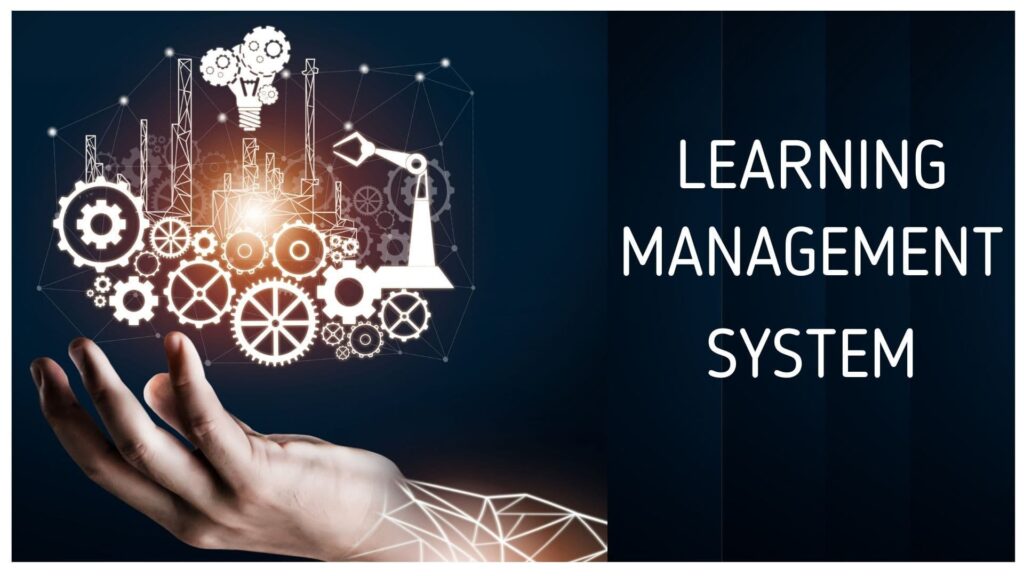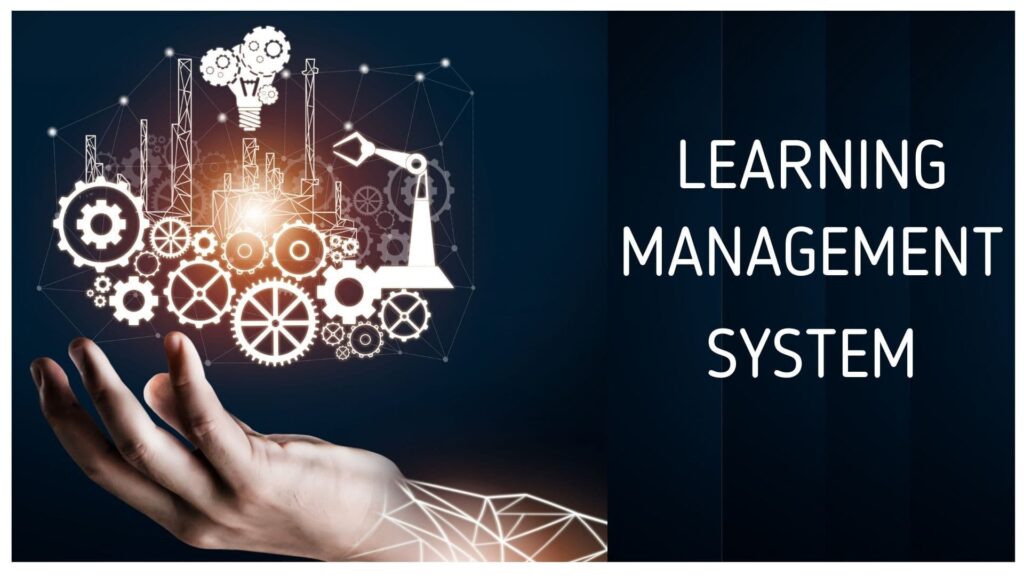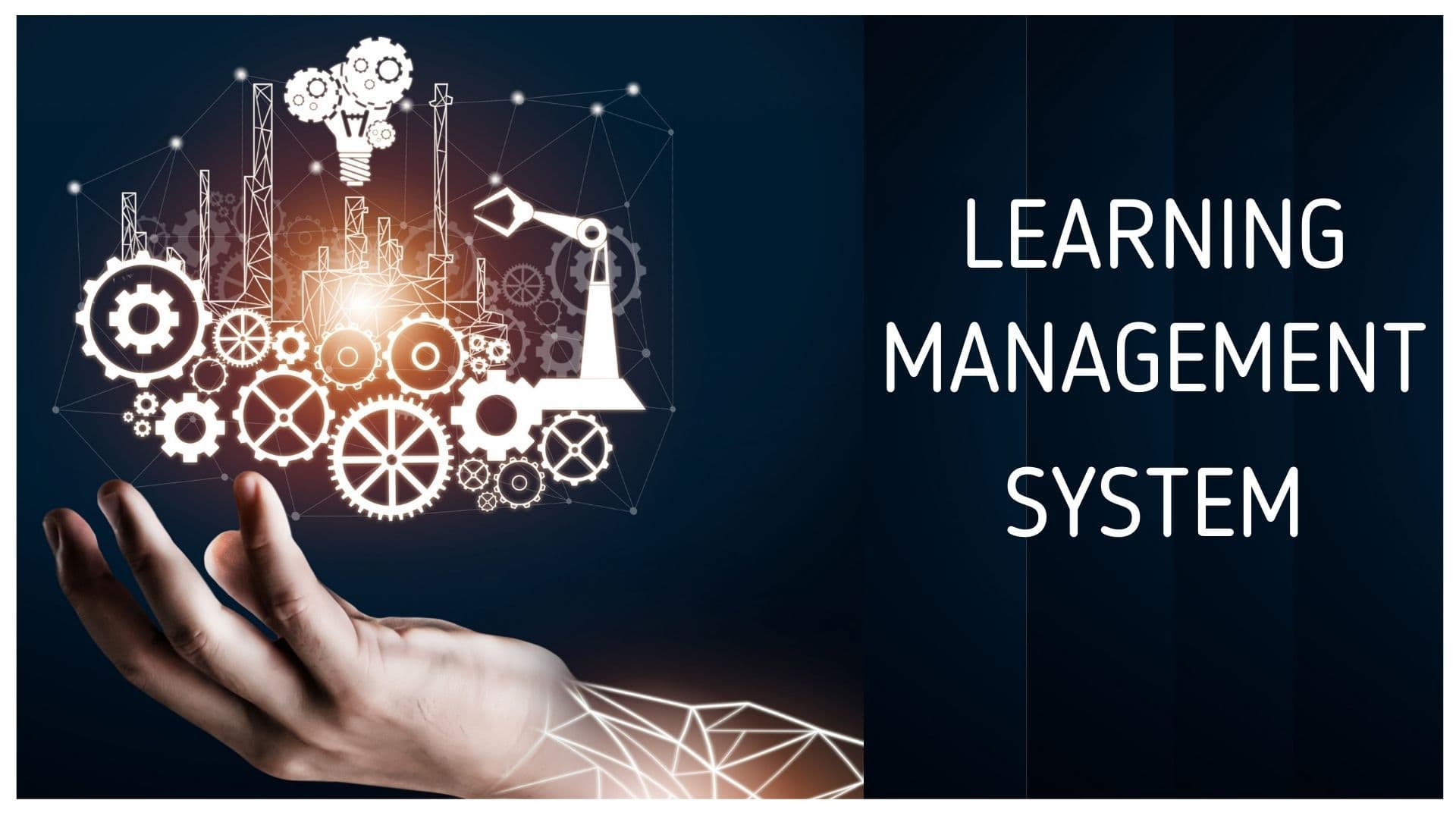In today’s digital age, the landscape of education is rapidly evolving. Traditional methods of teaching and learning are being supplemented, and in many cases replaced, by innovative technologies.
Among these technologies, learning management software (LMS) stands out as a powerful tool that has revolutionized the way educational institutions and organizations deliver and manage learning experiences.
With a robust learning management system, schools and companies can leverage data infrastructure to optimize learning management system opportunities, enabling more personalized and effective learning paths.
This data infrastructure for learning management system plays a crucial role in helping educators and administrators track progress, assess performance, and enhance engagement.
By employing data infrastructure to quantify learning management system opportunities and data infrastructure to identify trends in learning management system opportunities, organizations gain valuable insights that drive continuous improvement.
Furthermore, the ability to use data infrastructure to measure learning management system effectiveness and data infrastructure to measure learning management system opportunities ensures that learner outcomes are consistently aligned with educational goals.
Altogether, modern learner management software powered by advanced data infrastructure is shaping the future of education.
In this blog post, we will explore the transformative impact of LMS on education and discuss its benefits, challenges, and future prospects.

Evolution of Learning Management Software
The concept of learning management software can be traced back to the early days of the internet, with the emergence of rudimentary online learning platforms.
However, it wasn’t until the late 1990s and early 2000s that the learning management system (LMS) began gaining widespread adoption across academic institutions and corporate training environments.
As digital transformation accelerated, the demand for scalable and efficient learner management software grew exponentially.
Today, organizations are also exploring the potential of data infrastructure for learning management system opportunities, leveraging advanced analytics to personalize learning, track performance, and enhance user engagement.
Early LMS platforms focused primarily on course management, providing basic functionalities such as content delivery, assessment, and communication tools
Over the years, the learning management system (LMS) has evolved significantly, driven by advances in technology and changing educational needs.
Modern LMS platforms now offer a wide range of features and capabilities, including multimedia content creation, social learning tools, mobile compatibility, and robust data analytics.
Today, organizations are increasingly leveraging data infrastructure to evaluate learning management system opportunities, helping them make informed decisions about platform adoption and enhancement.
By utilizing data infrastructure for LMS opportunities, institutions can quantify learning management system opportunities, measure learning management system opportunities, and even identify trends in learning management system opportunities more effectively.
This enables educational institutions and enterprises to build a scalable data infrastructure to optimize learning management system opportunities and to stay ahead of evolving learning trends.
Ultimately, implementing a strong data infrastructure for learning management system opportunities helps organizations identify trends in learning management system evolution and capitalize on emerging possibilities.
These advancements have transformed LMS from mere course management systems into comprehensive learning ecosystems that facilitate personalized and engaging learning experiences.
Benefits of Learning Management Software

The adoption of learning management software brings numerous benefits to educational institutions, corporations, and learners alike. Some of the key advantages include:
- Accessibility and Flexibility: LMS enables learners to access educational resources and participate in courses anytime, anywhere, using various devices such as computers, tablets, and smartphones.
- This flexibility is particularly valuable for students and professionals with busy schedules or those unable to attend traditional classroom-based training.
- Scalability: LMS allows organizations to scale their training programs efficiently, accommodating a large number of learners without significant infrastructure investments.
- Whether it’s a small classroom or a multinational corporation, LMS can adapt to the needs of diverse learning environments.
- Personalization: With features like adaptive learning paths, competency-based assessments, and personalized recommendations, LMS empowers instructors to tailor learning experiences to individual learner needs and preferences. This personalized approach enhances learner engagement and improves learning outcomes.
- Collaboration and Interaction: LMS facilitates collaboration and interaction among learners, instructors, and peers through discussion forums, social networking tools, and virtual classrooms. These collaborative features foster a sense of community and create opportunities for meaningful learning experiences.
- Data-driven Insights: LMS generates valuable data on learner engagement, progress, and performance, which can be used to inform instructional design, measure learning outcomes, and identify areas for improvement.
- By leveraging data analytics, organizations can optimize their training programs and drive continuous improvement.

What is Learning Management Software in 2024 Challenges and Considerations
While learning management software offers numerous benefits, its implementation and adoption may also present challenges and considerations. Some common challenges include:
- Technical Complexity: Implementing and maintaining an LMS requires technical expertise and resources, including hardware, software, and IT support. Organizations must carefully assess their technical capabilities and infrastructure readiness before investing in an LMS.
- Training and Support: Effective use of an LMS requires training and support for both instructors and learners. Without proper training, users may struggle to navigate the platform or utilize its features effectively, leading to frustration and disengagement.
- Content Quality and Relevance: The success of an LMS depends on the quality and relevance of the content it delivers. Organizations must invest in developing high-quality educational materials that align with learning objectives and meet the needs of their target audience.
- Integration and Compatibility: Integrating an LMS with existing systems and tools, such as learning content repositories, student information systems, and authentication systems, can be complex and time-consuming. Compatibility issues may arise, requiring careful planning and coordination.
- Data Privacy and Security: LMS platforms handle sensitive data, including personal information and learning analytics. Organizations must ensure compliance with data privacy regulations and implement robust security measures to protect against data breaches and unauthorized access.
Future Prospects
Looking ahead, the future of learning management software appears promising, with continued innovation and evolution expected in the years to come. Some emerging trends and developments to watch out for include:
- AI and Machine Learning: Integration of artificial intelligence (AI) and machine learning technologies into LMS platforms to enable adaptive learning, intelligent tutoring, and predictive analytics.
- Microlearning and Mobile Learning: Emphasis on bite-sized learning modules and mobile-friendly content delivery to cater to the preferences of modern learners who prefer on-the-go access to educational resources.
- Gamification and Immersive Learning: Incorporation of gamification elements, virtual reality (VR), and augmented reality (AR) to enhance learner engagement and create immersive learning experiences.
- Open Standards and Interoperability: Adoption of open standards and interoperable frameworks to enable seamless integration and data exchange between different LMS platforms and educational systems.
- Lifelong Learning and Upskilling: Shift towards lifelong learning and continuous upskilling driven by technological advancements and evolving job market demands, with LMS playing a central role in facilitating lifelong learning journeys.
Learning management software has emerged as a transformative force in education, enabling institutions and organizations to deliver flexible, personalized, and engaging learning experiences.
With the integration of advanced data infrastructure to quantify learning management system opportunities, educators can now make informed decisions that enhance user engagement and learning outcomes.
Leveraging data infrastructure to measure learning management system opportunities and data infrastructure to evaluate learning management system opportunities allows institutions to identify what works and where improvement is needed.
Additionally, trends can be predicted using data infrastructure to identify trends in learning management system, paving the way for strategic growth.
Whether you’re deploying a full-scale learner management software solution or focusing on continuous upgrades, investing in data infrastructure for learning management system opportunities and data infrastructure for LMS opportunities is essential.
These advancements also support data infrastructure for learning management system improvement, ensuring scalability and sustainability in digital learning environments.
While challenges exist, the benefits of LMS far outweigh the drawbacks, and the future holds exciting opportunities for further innovation and development in this field.
As we embrace the digital revolution in education, LMS will continue to play a crucial role in shaping the future of learning.
Embracing Change and Adaptation

As the educational landscape evolves, it’s essential for educators, administrators, and learners to embrace change and adapt to new technologies and methodologies.
Learning management software represents a significant shift in how education is delivered and managed, offering tools that enhance accessibility, engagement, and personalization. Its successful implementation requires a collaborative effort from all stakeholders, backed by robust data infrastructure for learning management system adoption.
For educators, integrating an LMS into their teaching practices opens up new opportunities for innovation and creativity. However, to ensure continued effectiveness, institutions must rely on data infrastructure to measure learning management system opportunities and guide decision-making with actionable insights.
Administrators benefit greatly from systems supported by data infrastructure to measure LMS opportunities and data infrastructure to evaluate learning management system opportunities, which help them identify trends, gaps, and areas for improvement.
Moreover, enhancing LMS performance requires data infrastructure to optimize LMS, data infrastructure to optimize learning management system opportunities, and data infrastructure to measure learning management system improvement. These analytical tools ensure that digital education evolves in sync with learner needs and institutional goals.
By leveraging data infrastructure to identify trends in LMS, schools and universities can proactively adapt strategies, improve user engagement, and maximize learning outcomes.
Whether it’s designing interactive multimedia content, facilitating online discussions, or monitoring learner progress, LMS empowers educators to create dynamic and engaging learning experiences that cater to the diverse needs of today’s learners.
Administrators play a crucial role in supporting the adoption and implementation of LMS within educational institutions and organizations.
They must provide adequate resources, training, and support to ensure that educators and learners can effectively utilize the platform. Additionally, administrators need to establish policies and guidelines to safeguard data privacy and security and ensure compliance with relevant regulations.
For learners, embracing LMS means taking ownership of their learning journey and leveraging the available resources and tools to maximize their educational outcomes.
Whether it’s accessing course materials, collaborating with peers, or tracking their progress, learners have the flexibility and autonomy to customize their learning experience according to their preferences and goals.
learning management software has transformed the way education is delivered, managed, and experienced. From traditional classrooms to corporate training programs, LMS has become an indispensable tool for facilitating flexible, personalized, and engaging learning experiences.
While challenges exist, such as technical complexity, content quality, and data privacy concerns, the benefits of LMS outweigh the drawbacks, and the future prospects for this technology are promising.
With continued innovation and evolution, LMS will play a central role in shaping the future of education, enabling lifelong learning and empowering individuals to acquire new skills and knowledge in a rapidly changing world.
As we navigate the digital revolution in education, it’s crucial for all stakeholders to collaborate, adapt, and embrace the opportunities that learning management software brings. By working together, we can harness the full potential of LMS to create a more inclusive, accessible, and effective learning environment for learners of all ages and backgrounds.
Title: Navigating Education’s Digital Frontier: Exploring the Best Learning Management Solutions
In the ever-evolving landscape of education, the integration of technology has become imperative for institutions and organizations seeking to deliver effective and engaging learning experiences. At the heart of this digital transformation are learning management solutions (LMS), powerful platforms designed to streamline the administration, delivery, and management of educational content. In this blog post, we’ll take a deep dive into some of the best LMS options available today, exploring their features, benefits, and suitability for various educational contexts.
Moodle: The Open-Source Powerhouse

Moodle stands out as one of the most popular open-source learning management systems, boasting a robust set of features and a vibrant community of developers and users.
With Moodle, educators have the flexibility to create and customize courses, manage enrollments, and assess student progress using a wide range of tools and plugins. Its open-source nature also means that institutions can tailor the platform to suit their specific needs and integrate it with other systems seamlessly.
Canvas: The User-Friendly Innovator
Canvas has gained widespread acclaim for its intuitive interface, modern design, and comprehensive feature set. Developed by Instructure, Canvas offers a user-friendly experience for both instructors and learners, with tools for content creation, communication, assessment, and analytics. Its mobile compatibility and cloud-based infrastructure make it a versatile choice for institutions looking to deliver accessible and engaging learning experiences across diverse devices and environments.
Blackboard Learn: The Established Leader
Blackboard Learn has long been a staple in the world of online education, known for its reliability, scalability, and extensive feature set.
With Blackboard Learn, institutions can manage courses, engage students with multimedia content, facilitate collaboration, and track learner progress with ease.
Its robust administrative tools and integration capabilities make it a preferred choice for large institutions and corporations seeking a comprehensive learning management solution.
Google Classroom: The Collaborative Platform
Google Classroom leverages the power of G Suite for Education to provide a seamless and collaborative learning environment for educators and students.
Built on familiar Google tools such as Drive, Docs, and Gmail, Google Classroom simplifies the process of creating, distributing, and grading assignments, while fostering collaboration and communication among class members. Its integration with Google’s ecosystem makes it an ideal choice for schools and institutions already using G Suite for Education.

Schoology: The All-in-One Solution
Schoology offers a comprehensive learning management platform that combines course management, assessment, collaboration, and analytics into a unified solution.
With Schoology, educators can create engaging multimedia-rich courses, track student progress in real-time, facilitate discussions, and provide timely feedback.
Its intuitive interface and extensive feature set make it suitable for K-12 schools, higher education institutions, and corporate training programs alike.
Choosing the Right Solution
In conclusion, the best learning management solution for your institution or organization will depend on your specific needs, requirements, and priorities. Whether you prioritize open-source flexibility, user-friendly design, established reliability, collaborative features, or comprehensive functionality, there is a learning management solution out there to meet your needs.
Before making a decision, consider factors such as cost, scalability, integration capabilities, support and training options, and alignment with your institution’s goals and values. By carefully evaluating your options and choosing the right learning management solution, you can empower educators, engage learners, and unlock the full potential of technology in education.
Implementation Considerations
Once you’ve chosen the best learning management solution for your institution or organization, it’s essential to consider the implementation process carefully. Successful implementation requires careful planning, collaboration, and support from all stakeholders. Here are some key considerations to keep in mind:
- Needs Assessment: Conduct a thorough needs assessment to identify the specific requirements and objectives of your institution or organization. Consider factors such as the size of your user base, the types of courses or training programs you offer, existing infrastructure and technology, and budget constraints.
- Training and Support: Provide comprehensive training and support for educators, administrators, and learners to ensure they can effectively utilize the learning management solution. Offer workshops, tutorials, and online resources to familiarize users with the platform’s features and functionalities.
- Integration with Existing Systems: Ensure seamless integration with existing systems and tools such as student information systems, authentication systems, content repositories, and third-party applications. Verify compatibility and interoperability to avoid technical issues and data discrepancies.
- Data Migration and Management: Plan for the migration of existing data, including course materials, user profiles, and assessment records, to the new learning management solution. Develop data management protocols and policies to ensure data integrity, security, and compliance with privacy regulations.
- Customization and Configuration: Customize and configure the learning management solution to align with your institution’s branding, pedagogical approach, and administrative workflows. Take advantage of customization options, templates, and plugins to tailor the platform to your specific needs.
- Pilot Testing and Feedback: Conduct pilot testing with a small group of users to identify any issues or challenges and gather feedback for improvement.
Learning Management software | Types, Benefits, & Price 2024 Maximizing the Impact
Once the learning management solution is successfully implemented, it’s important to maximize its impact and ensure ongoing success. Here are some strategies for maximizing the impact of your learning management solution:
- Continuous Improvement: Regularly review and evaluate the effectiveness of the learning management solution in meeting your institution’s goals and objectives. Solicit feedback from users and stakeholders and use data analytics to identify areas for improvement and optimization.
- Community Engagement: Foster a sense of community and collaboration among users by facilitating discussions, sharing best practices, and recognizing achievements. Encourage educators to collaborate on course development and share resources and strategies for effective teaching and learning.
- Accessibility and Inclusivity: Ensure that the learning management solution is accessible to all learners, including those with disabilities or diverse learning needs. Provide alternative formats, assistive technologies, and accommodations to ensure equitable access to educational content and resources.
- Professional Development: Invest in ongoing professional development and training for educators to enhance their digital literacy skills and pedagogical practices.
- Offer opportunities for educators to explore new features, tools, and instructional strategies and share their experiences with colleagues.
- Data-Driven Decision Making: Leverage data analytics to inform decision-making and improve instructional design, student support services, and overall learning outcomes.
- Monitor key performance indicators, such as course completion rates, learner engagement, and assessment scores, to track progress and identify areas for intervention.
By following these implementation considerations and strategies for maximizing impact, you can unlock the full potential of your learning management solution and create a transformative learning environment for educators and learners alike.
With careful planning, collaboration, and ongoing support, you can harness the power of technology to advance education and empower individuals to achieve their learning goals.


